‘Bedouins of the sea’
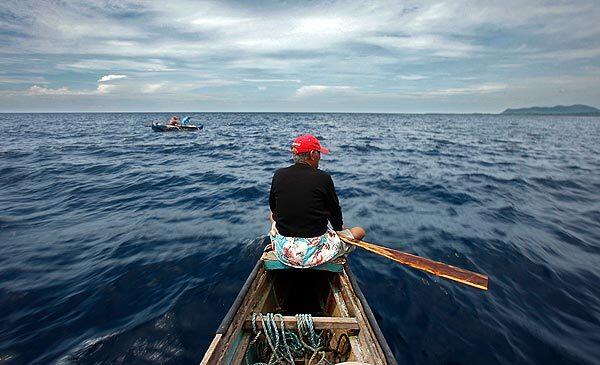
Johnny Aralaji, leader of a Badjao community in Puerto Princesa, Philippines, scans the sea for almost nonexistent schools of fish. The Badjao, an ancient seafaring community with origins in the Sulu Sea, are known locally as sea gypsies or the Bedouin of the sea. (Luis Sinco / Los Angeles Times)
The Badjao, nomadic Muslim fishermen known in the Philippines as the Bedouin of the sea, have wandered the southern oceans for centuries. Now, amid environmental degradation and overfishing, their way life is under threat.
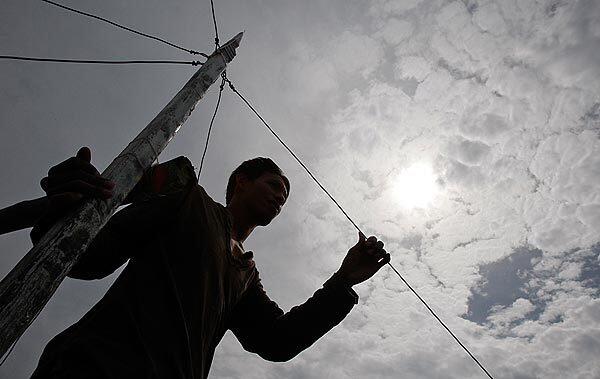
Under the blazing sun, Badjao fisherman Sonny Apsar, 29, searches for telltale signs of fish off the coast of Puerto Princesa. This is very hard work, he said, I don’t want to be a fisherman anymore. At night he supplements his meager income by driving a three-wheeler motorcycle taxi, a common form of public transport. (Luis Sinco / Los Angeles Times)
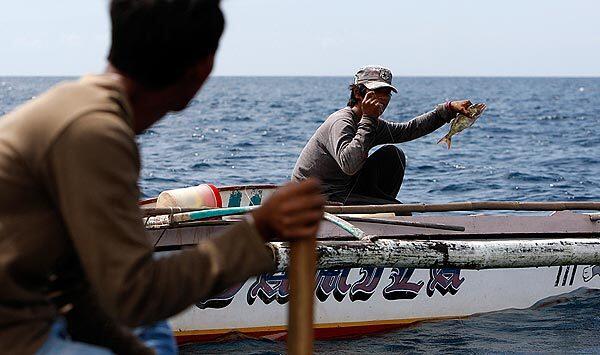
A fisherman smiles as he holds up a small fish hooked in the waters off Puerto Princesa. In recent years, catches have been meager amounting each time to little more than a few dozen fish measuring less than eight inches. Over-fishing and environmental degradation have decimated fisheries throughout the Philippines. The toll has been heaviest on seafaring people such as the Badjao. (Luis Sinco / Los Angeles Times)
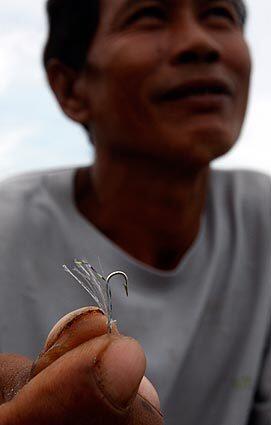
The Badjao tie dozens of small hooks to long fishing lines. Expert fishermen and navigators, the Badjao are largely illiterate, having no use for the written word or arithmetic. This leaves them vulnerable as their means of livelihood is eroded. (Luis Sinco / Los Angeles Times)
Advertisement
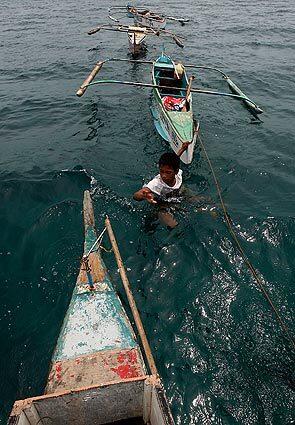
A boy ties fishing boats together as members of the small fishing fleet take a break to eat a meal together. The seafaring culture and traditions of the “sea gypsies” date back nearly 1,000 years, but may soon run aground due to social, political and environmental issues that are largely beyond their control. (Luis Sinco / Los Angeles Times)
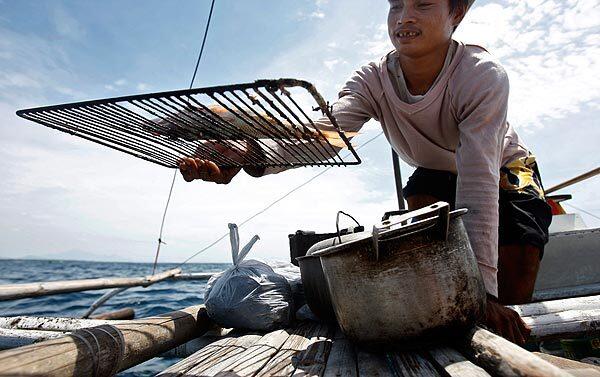
Amono Aralaji, 18, prepares to grill a fish for an onboard meal to be shared by members of a Badjao fishing fleet working the waters off Puerto Princesa. The fishermen sometimes catch only enough for their meals, leaving little or nothing to bring back to the village. (Luis Sinco / Los Angeles Times)
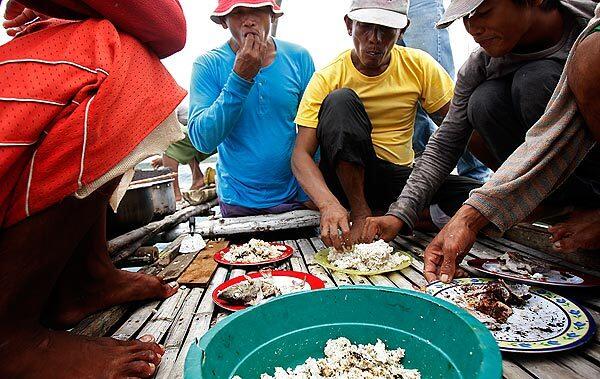
Badjao fishermen share a meal of fresh fish, rice and mashed cassava in the waters off Puerto Princesa. The Badjao moved north to Palawan about 20 years ago to escape pirates who often robbed them at gunpoint, as well as the ongoing conflict between the Philippine military and Muslim separatists in the southern islands of Mindanao. (Luis Sinco / Los Angeles Times)
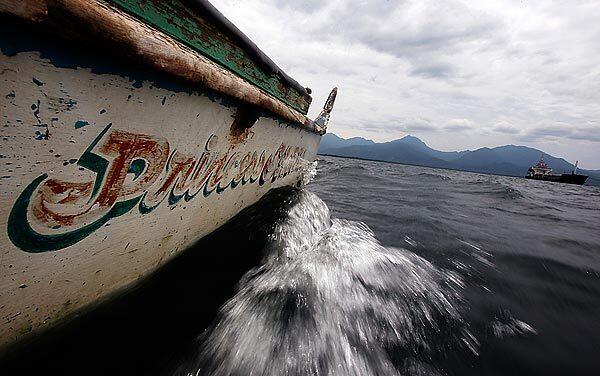
A fishing boat pushes home after a largely unsuccessful day at sea. Increasingly unable to catch enough fish to eke out a living, Badjao are often forced to buy food and fuel on credit, sinking them deeper into poverty and debt. (Luis Sinco / Los Angeles Times)
Advertisement
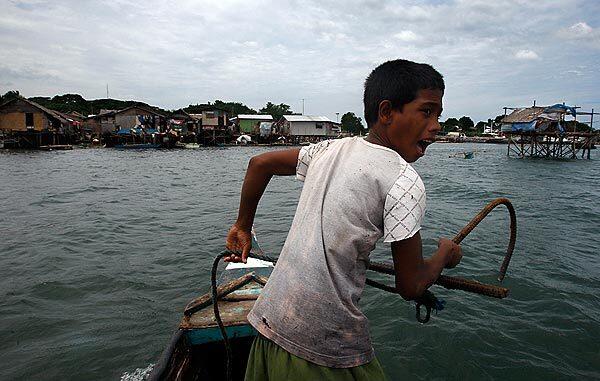
A fishing boat approaches anchorage in a village in Puerto Princesa. The Badjoa mainly live in houses built on stilts above the sea or over coastal tidelands, and resist ongoing Philippine government efforts to move them to permanent communities inland. (Luis Sinco / Los Angeles Times)
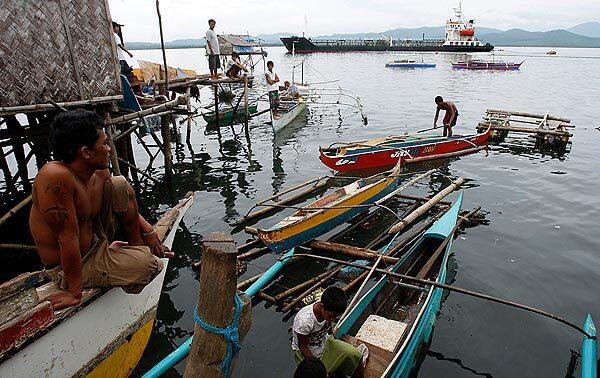
Badjao villagers in Palawan, prep their boats for a day of fishing. As their livelihood diminishes, many Badjao have traveled as far north as Manila only to end up as beggars on the streets of the sprawling metropolis. In the past, the Badjao rarely set foot on land, instead living their entire lives on boats or water-locked villages. (Luis Sinco / Los Angeles Times)
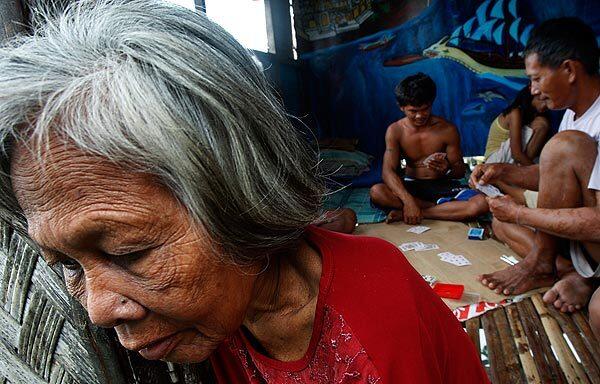
An elderly Badjao woman sits at her doorstep as the men of her family play cards in a house built on stilts in a tidal area on the outskirts of Puerto Princesa. The Badjao have maintained pagan rituals though many have converted to Islam. (Luis Sinco / Los Angeles Times)
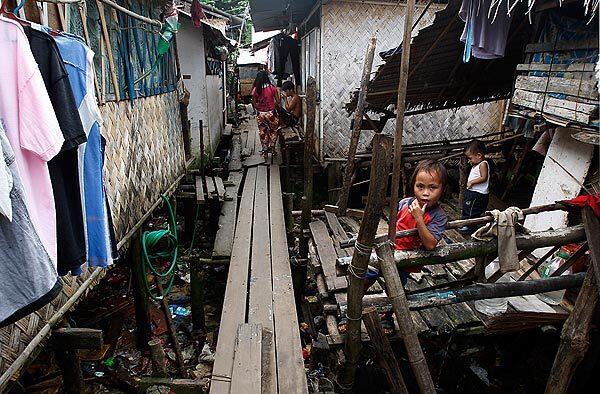
A Badjao village sits atop coastal tidalands on the outskirts of Puerto Princesa. They once lived mainly in communities of large wooden boats rafted together or homes built on stilts over open water. Ongoing conflict, piracy and depleted fish stocks in the Badjaos native southern Philippines has increasingly forced them to find alternative living arrangements closer to shore. (Luis Sinco / Los Angeles Times)
Advertisement
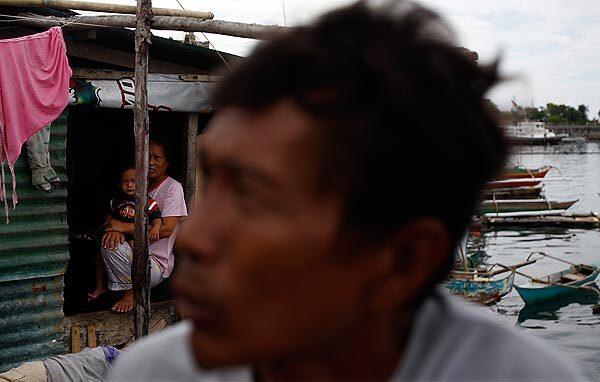
Badjao tribespeople live in a seafront settlement in Puerto Pincesa, Philippines, far from their ancestral homes in the in the Southern Philipines, stretching from Mindanao to Malaysia. The nomads are often mistreated in Philippine society viewed with derision and judged to be an impoverished and illiterate lot. (Luis Sinco / Los Angeles Times)
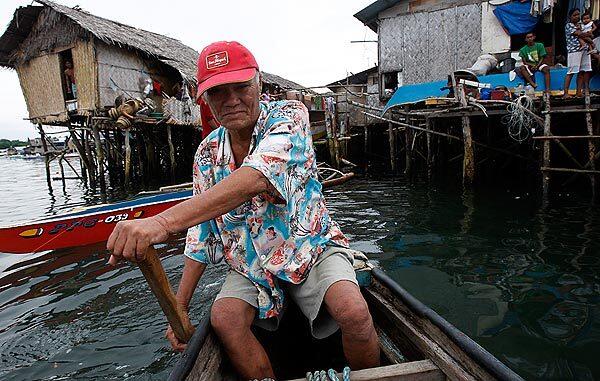
Johnny Aralaji heads out in the early morning to catch fish. Born on a boat in the waters off Mindanao, Aralaji moved north to Puerto Princesa more than two decades ago to escape the political turmoil that plagues Mindanao. Aralaji guesses his age to be 70; the Badjao dont mark birthdays. He sees the traditions of his people ebbing but remains unsentimental and resolute, saying he knows the Badjao must seek land-based alternatives to survive. (Luis Sinco / Los Angeles Times)
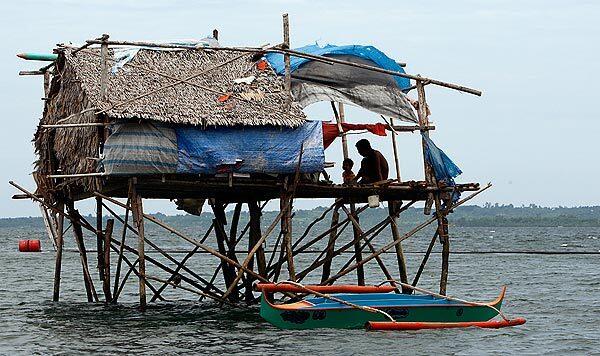
A Badjao family shares a meal in a house built on stilts off the coast of Puerto Princesa. Whole Badjao communities of such homes are fast disappearing throughout the region as the Badjao adapt to a changing world where they must seek a living closer to land. (Luis Sinco / Los Angeles Times)



